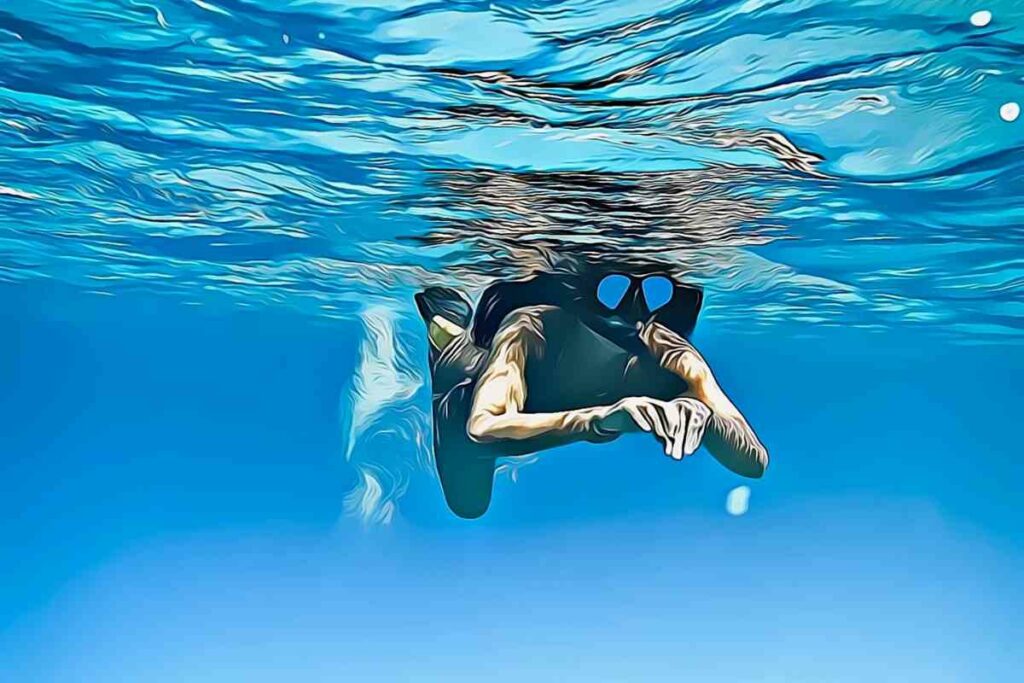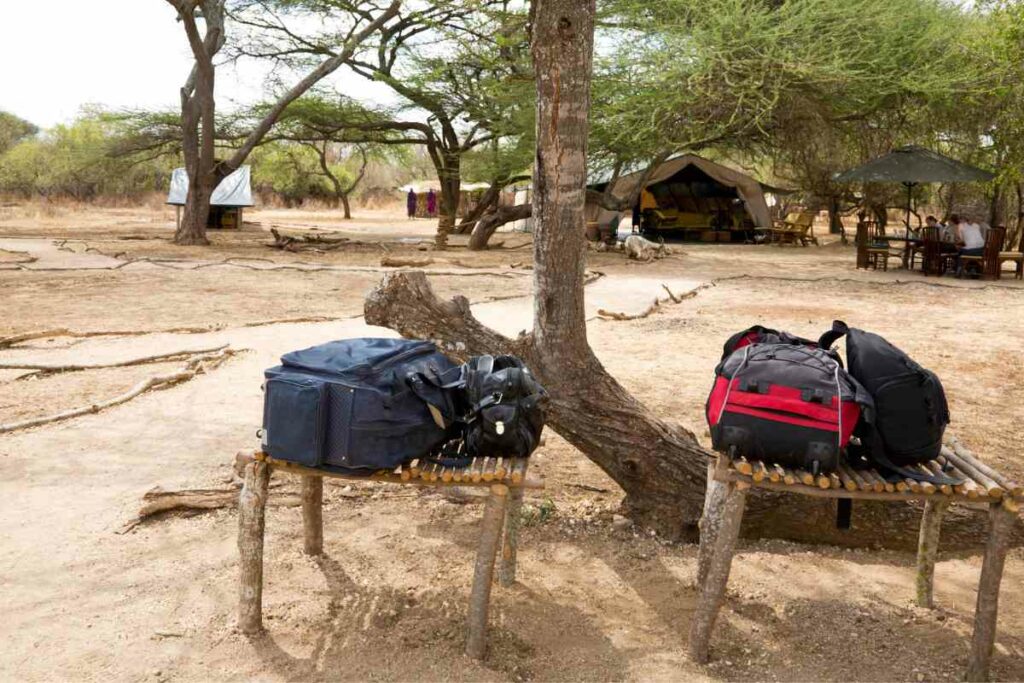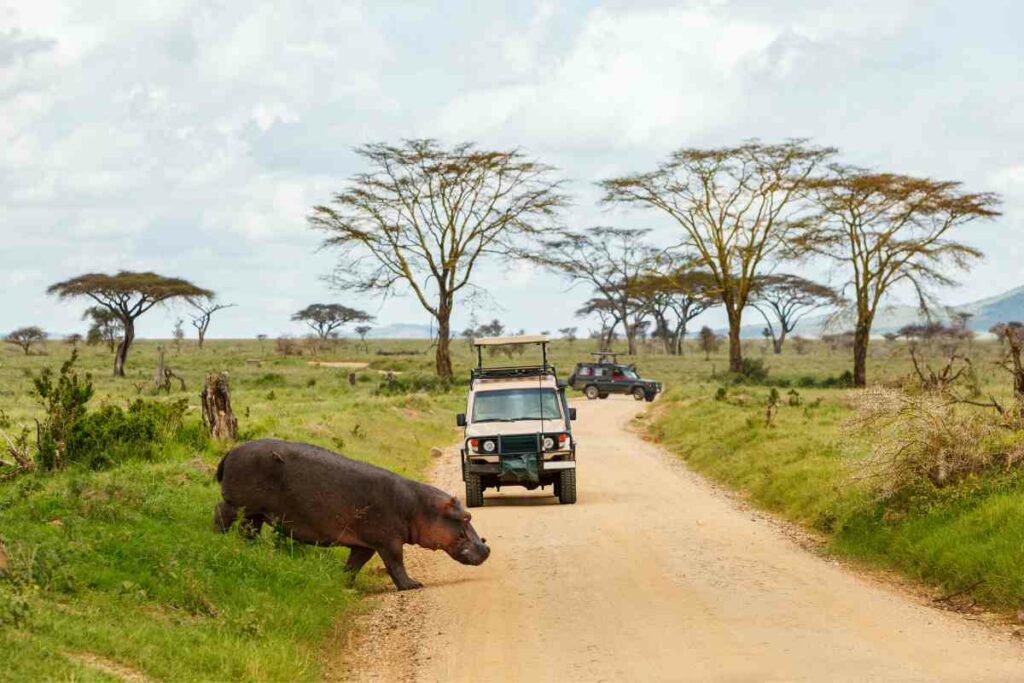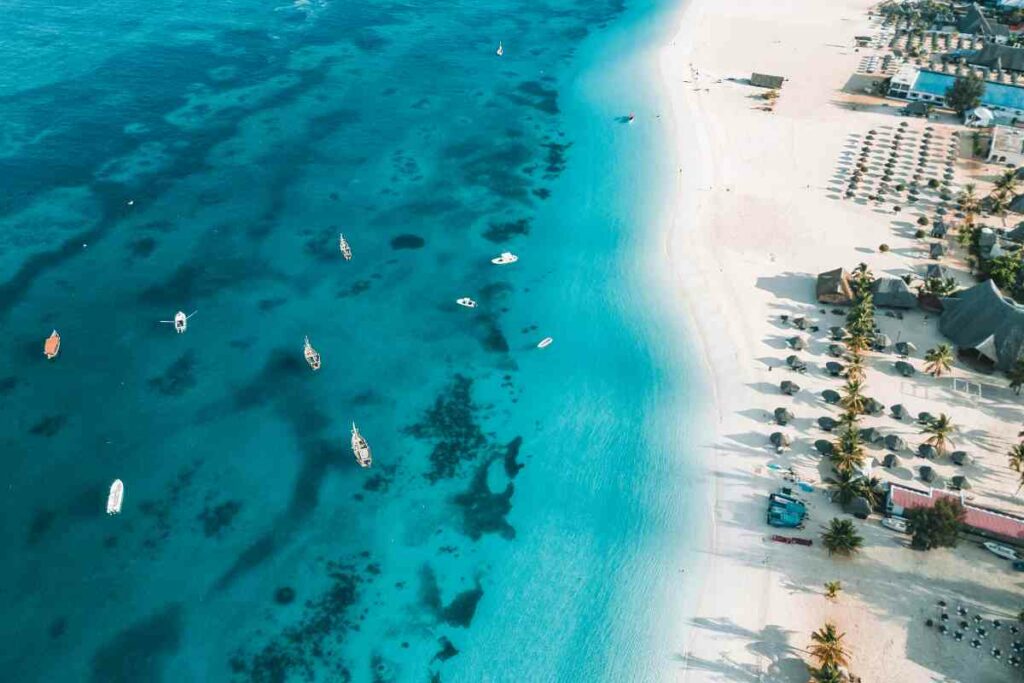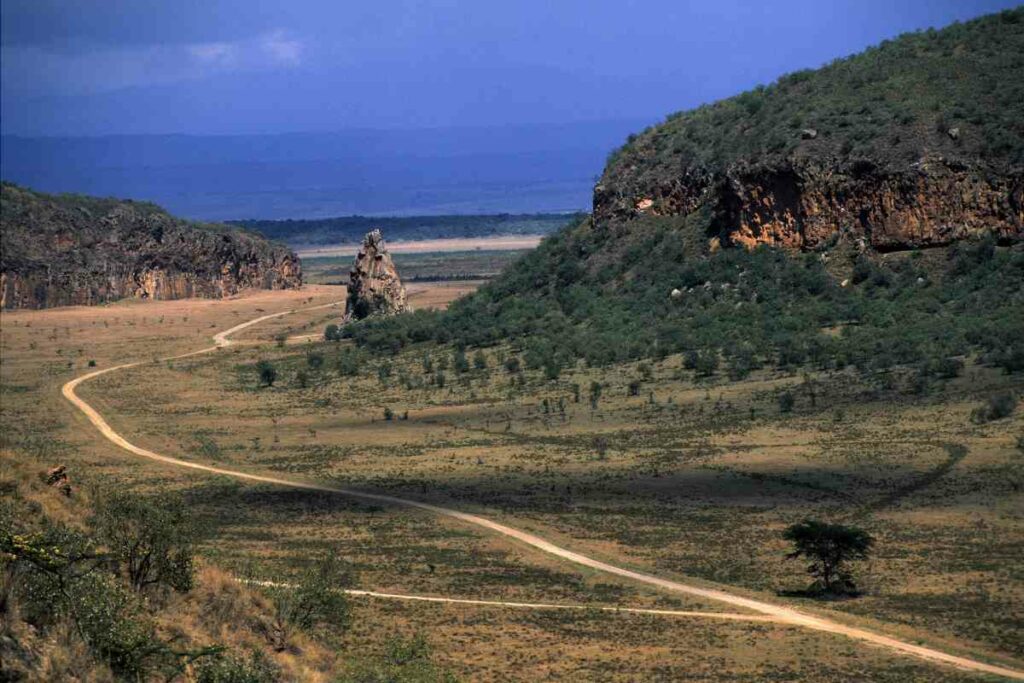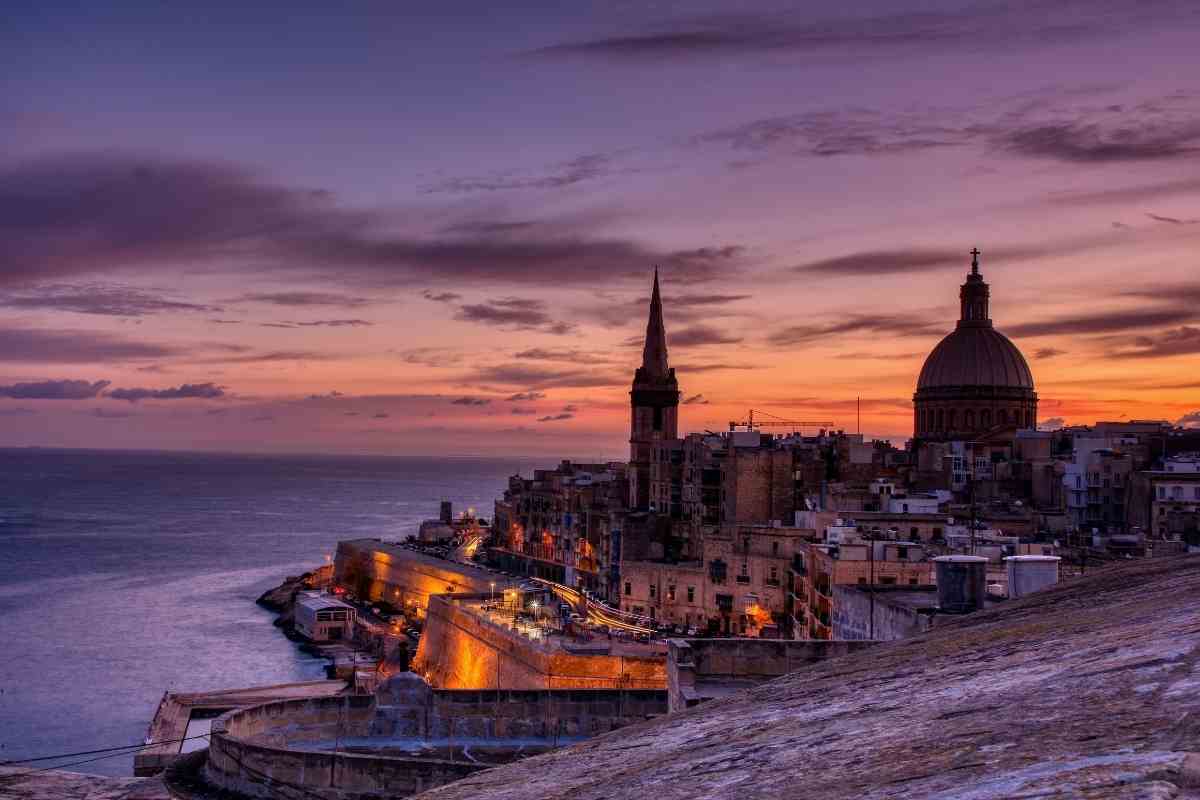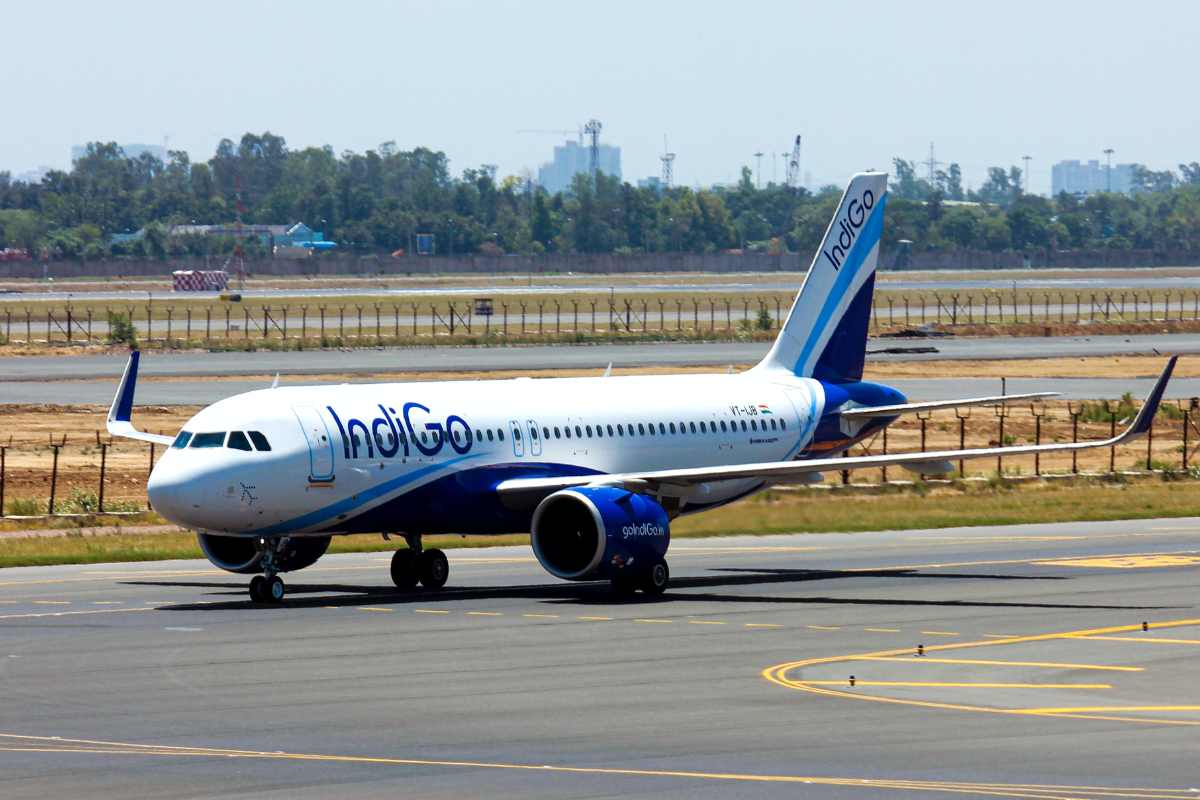Mount Kenya is a popular destination for both expert climbers and beginners.
If you plan to scale this majestic mountain, the rule of thumb is to always research it first before attempting the climb.
Here is a complete guide on climbing Mount Kenya, including the routes, how much it will cost, and how to prepare for a successful climb.
Brief History
Mt. Kenya is an ancient (3 million years old) extinct volcanic mountain with an altitude of 17,058 feet (5,199m.)
It is the highest mountain in Kenya and the 2nd highest in Africa.
Being a volcano, its circular and spans an area of approximately 60km across Kenyan’s Central region, attracting a fair share of mountain and rock climbers throughout the year.
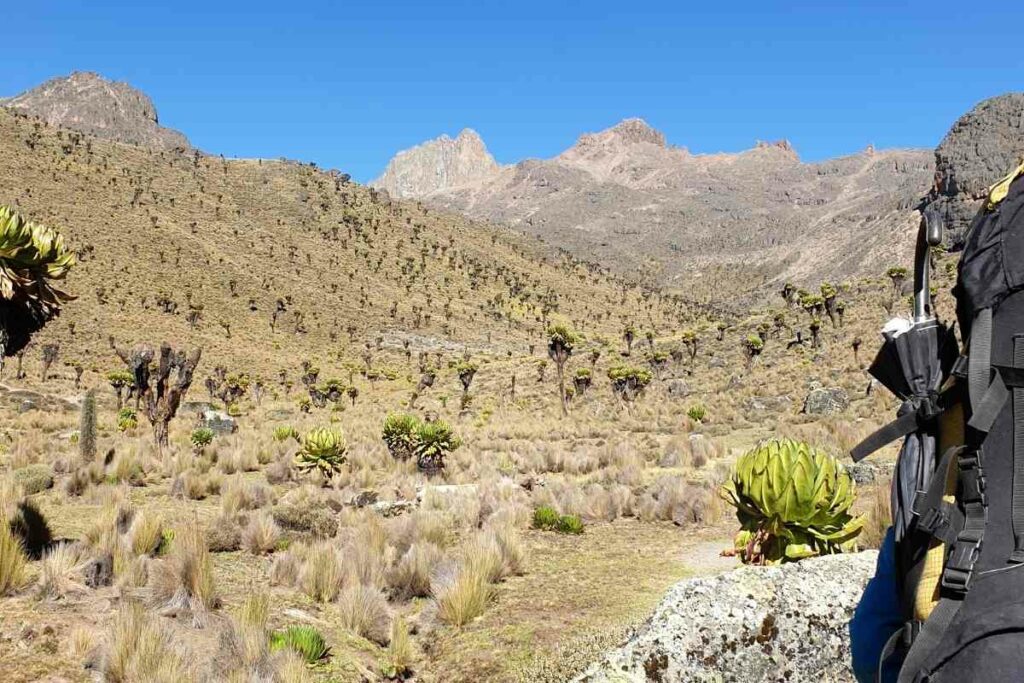
Its diverse terrain includes rocky outcrops, bamboo, grasslands, bushy forests, and plantations on the lower parts of the mountain.
The 12 glaciers on top of the mountain have rapidly receded as global temperatures rise.
The forests and grasslands also boast wildlife from elephants, cape buffaloes, rock hyrax, leopards, antelopes, and lions to monkeys.
The mountain is a Symbol of Unity for the Kenyan people, with the country’s flag hoisted at the peak shortly after it gained independence in 1963.
Besides, it is of cultural importance to the surrounding Agikuyu community, who believe it was the dwelling place of Ngai, their creator. It is also one of the seven UNESCO World Heritage Sites in Kenya.
Mount Kenya Peaks
The mountain has 3 primary peaks.
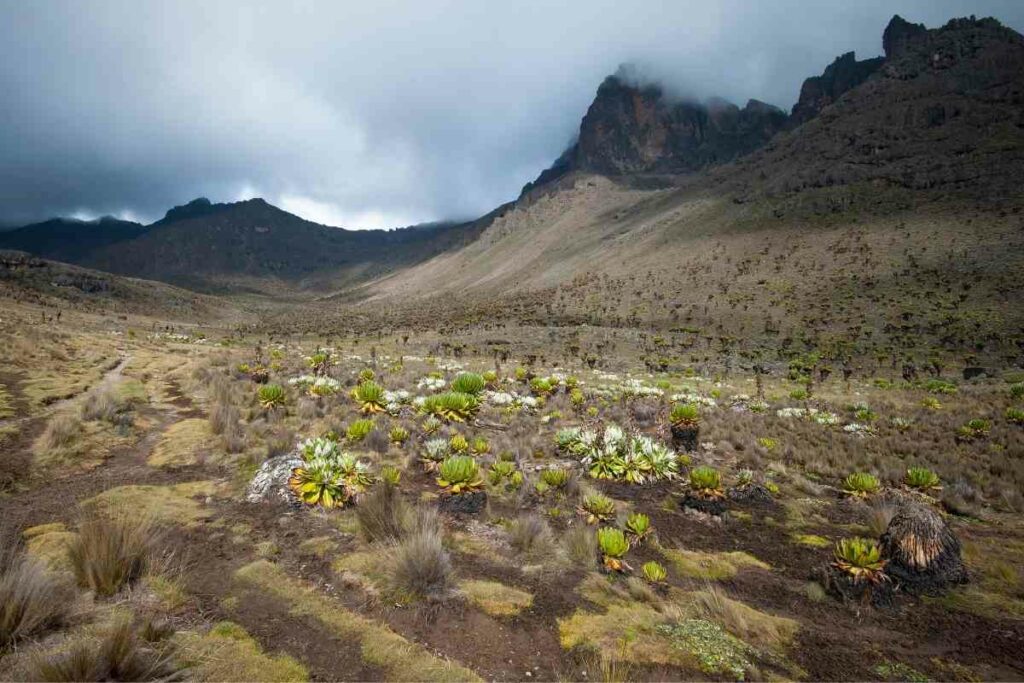
Let’s have a look at them in ascending order.
1. Point Lenana
Point Lenana has an elevation of about 16,354 feet (4,985 m).
It is the most famous peak of the mountain attracting over 10,000 climbers annually since it doesn’t require vast mountain climbing experience.
The terrain and elevation are quite moderate, and a beginner can easily reach this point, provided they are physically fit and have stamina.
2. Nelion Peak
It is the 2nd highest peak, with an elevation of about 17,021 feet (5,188 m).
It is more challenging than Lenana, and you need to have some good experience before attempting to reach Nelion.
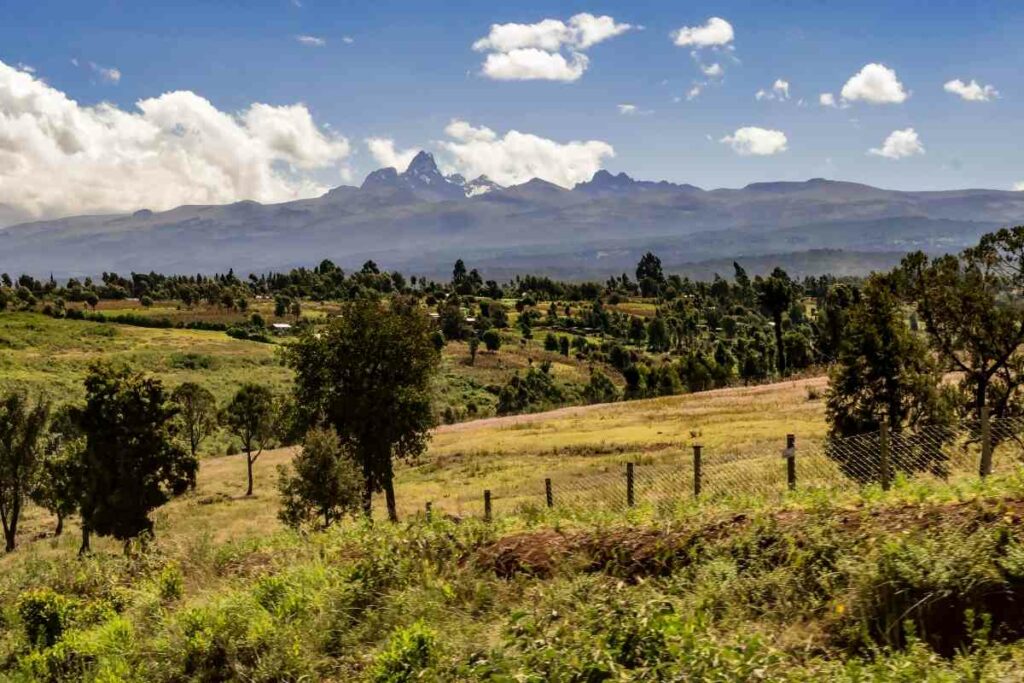
3. Batian Peak
Batian is the highest point on Mt Kenya at an astounding 17,057 feet (5,199 m).
Reaching this point requires tremendous physical and mental strength. Only a handful of seasoned climbers who try scaling this mountain can make it.
The daily temperature at this summit range from 5 to 12°C during the day and is usually below freezing at night.
As a Result – You must carry supplementary food items, warm clothing, and rock climbing equipment.
Besides these 3 peaks, other notable summits on Mount Kenya are:
- Point Piggott, 16,263 feet (4,957m)
- Point Dutton, 16,027 feet (4,885m)
- Point John, 16,020 feet (4,883m)
- Point Peter15,607 feet (4757m)
These points are famous for rock climbing on the mountain.
Now that you know your end goal let’s look at how you will get there.
Mt Kenya Climbing Routes
The mountain has plenty of routes to use during your ascent and decent.
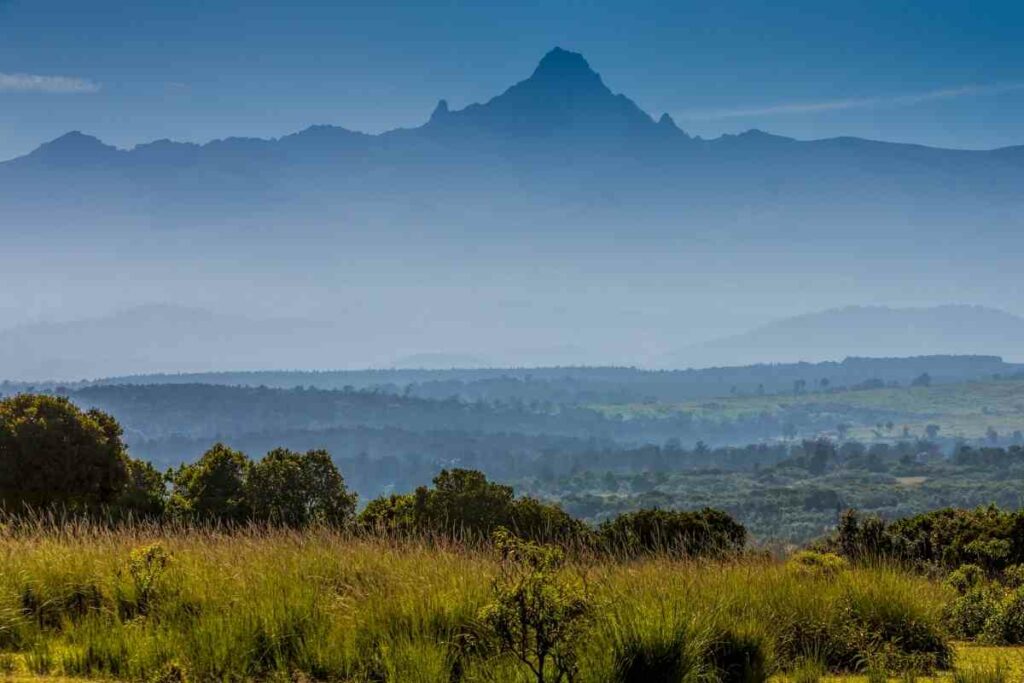
If you have the time and stamina, you can use one way for ascent and shift to another to descend the mountain.
Except for the physical strain, it’s definitely worth it since you will be able to experience different ecosystems and landscapes of the mountain.
Here are the different routes you can use when climbing Mount Kenya.
Sirimon Route
It is the easiest route to climb Mount Kenya.
It is not as physically challenging, and adventure seekers prefer it due to its panoramic views.
Besides, the course is punctuated by two camps; Old Moses Camp, at an altitude of 10,800 feet, and Shipton’s Camp, a bit higher at 13,800 feet.
What to Expect? It takes 2-3 days to arrive at Point Lenana, depending on how many stops you make along the way. Descending is must faster and usually take two days.
Naro Moru Route
If you want to reach the peak as soon as possible, The Naro Moru Route is your best pick.
The route is shorter, and you can arrive at Lenana in a single day but prepare for some steep climbs.
It would be best if you also were wary of the Vertical Bog, a part of the route that usually gets waterlogged during the rainy seasons.
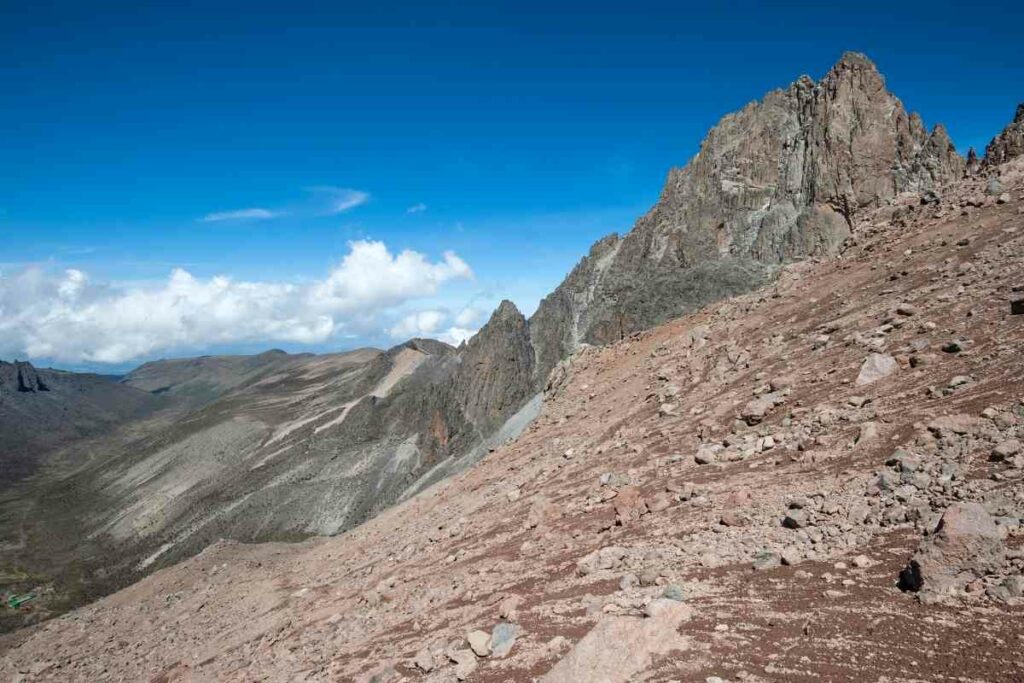
It has a wide variety of vegetation and offers you more scenery than Sirimon.
You can refresh or spend a night at the Met Station at 10,006 feet or Mackinder’s Camp at 13,779 feet.
Chogoria Route
The Chogoria trek is the most scenic route on the mountain.
It has glorious plant life and terrain that provides incredible scenery for hikers and photographers alike.
Some spectacular landmarks to look forward to on this route include:
- the beautiful Lake Michaelson
- Gorges Valley
- and the enchanting Hall Tarns
Burguret Route
It is the most challenging route among the trails.
The Burguret Route has dense vegetation as you go directly through the tropical rainforest, and it will take you at least three days to maneuver to the top.
Most ventures refrain from giving tours along this route, but if you want to experience the fullness of the trip, you can check it out.
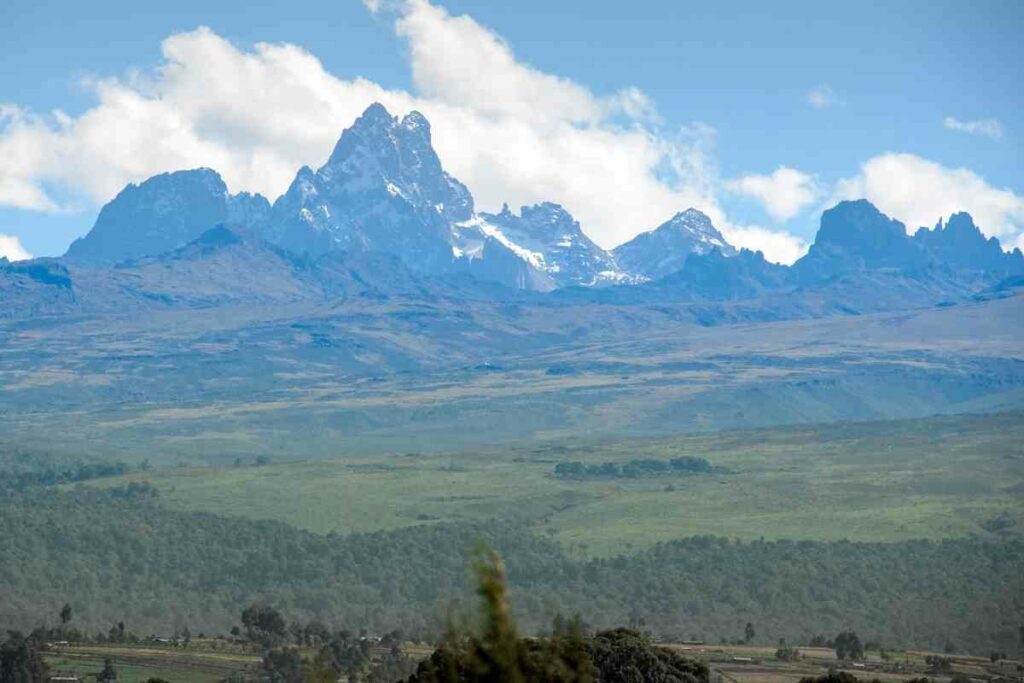
Unlike most camps where they are tented, you will spend your night in a furnished hut.
Timau Route
The Timau Route is one of the oldest routes to ascend Mount Kenya.
It is still available if you want to walk down memory lane but is the least used since it lacks an overnight camp.
When using this route, carry enough amenities to last you through the journey until you arrive at Lenana.
There are two additional routes, Meru and Kamweti Route, which hikers rarely use nowadays to climb Mount Kenya.
Best Time to Climb Mount Kenya
Keep in mind that the best months to climb Mount Kenya is during the short dry season of January to March and August to October.
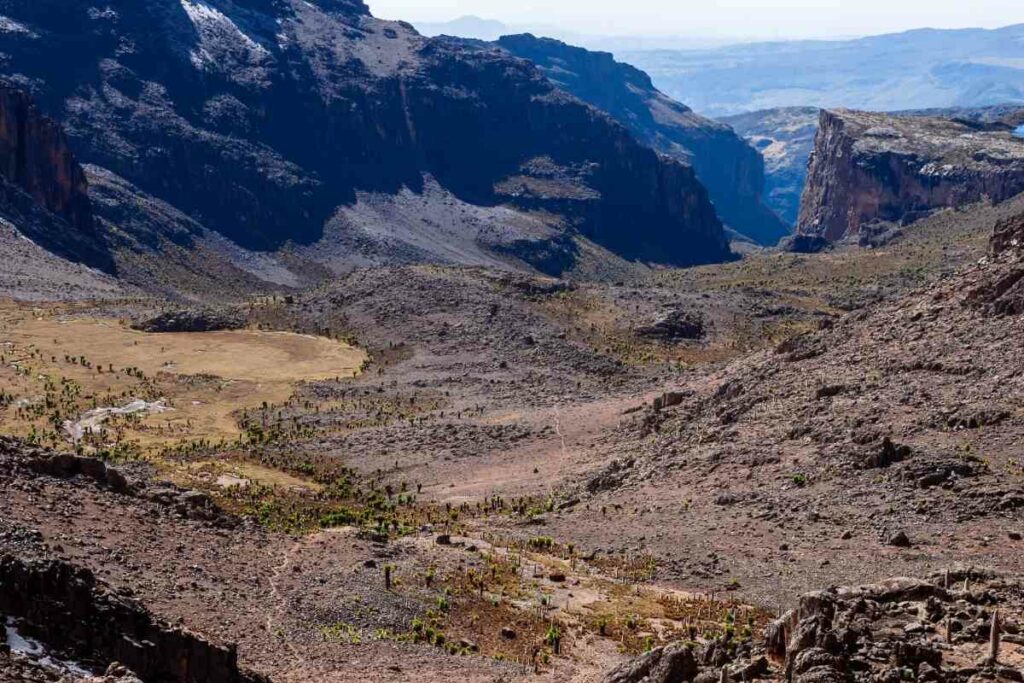
Despite the occasional mid-afternoon showers, the weather is relatively fair, with the mist gradually deteriorating as the day progresses.
By around 10 a.m., the mountain’s fog usually clears, ushering in sunny skies with gentle breezes.
Being the peak months, the main routes (Naro Moru, Chogoria, and Sirimon) are usually crowded, but it makes climbing more pleasurable.
The climbs start pretty early, sometimes as early as 2. a.m; to cover the most ground before the conventional rainfall in the afternoon.
Starting early also allows you to watch the sunrise.
It is a spectacular sight, delighting most hikers as the first rays of sunlight sparkle over the horizon.
How Much Does It Cost to Climb Mount Kenya?
The charges depend on the number of days the trip will take.
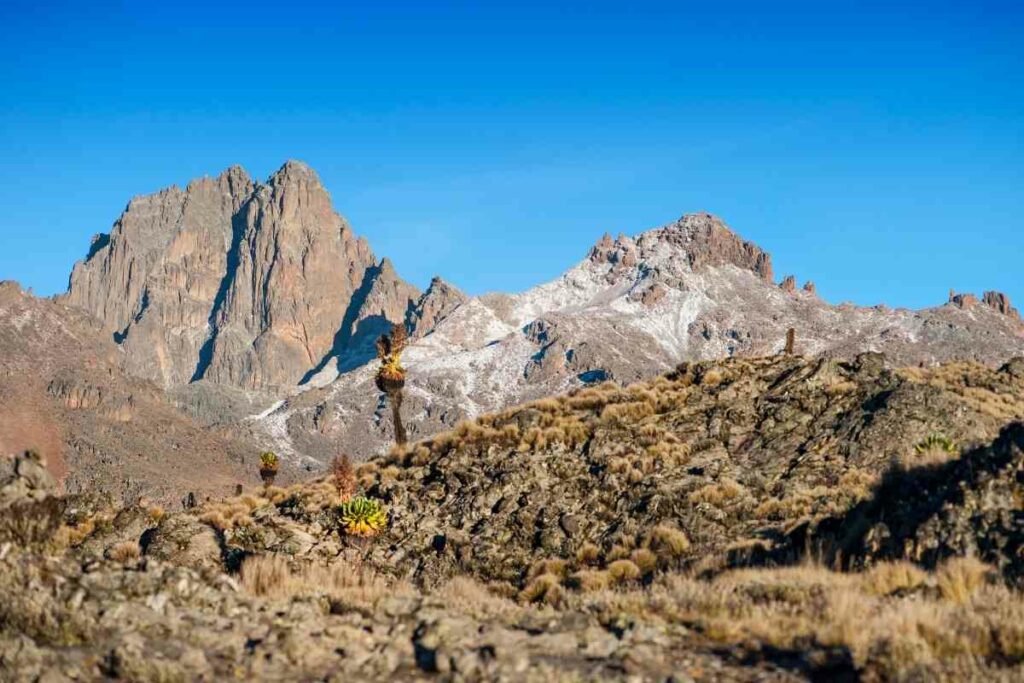
Mount Kenya National Park charges a conservation fee of:
- US$30 for a day trip
- US$85 for a 3-day trip
- US$110 for 4 days
- and US$140 for a 5-day adventure
If a child or student accompanies you, the rates are US$20, 55, 75, and 95, respectively.
Besides the conservation fee, you will also require a guide to lead your escapades.
They charge according to the number of days and your preferred route. The camps on the mountain have different accommodation rates too.
How To Get There
Mount Kenya is around 125 miles (200km) from the capital, Nairobi.
It is a 2-3-hour journey via public transport with prices ranging from around Ksh500 or US$5.
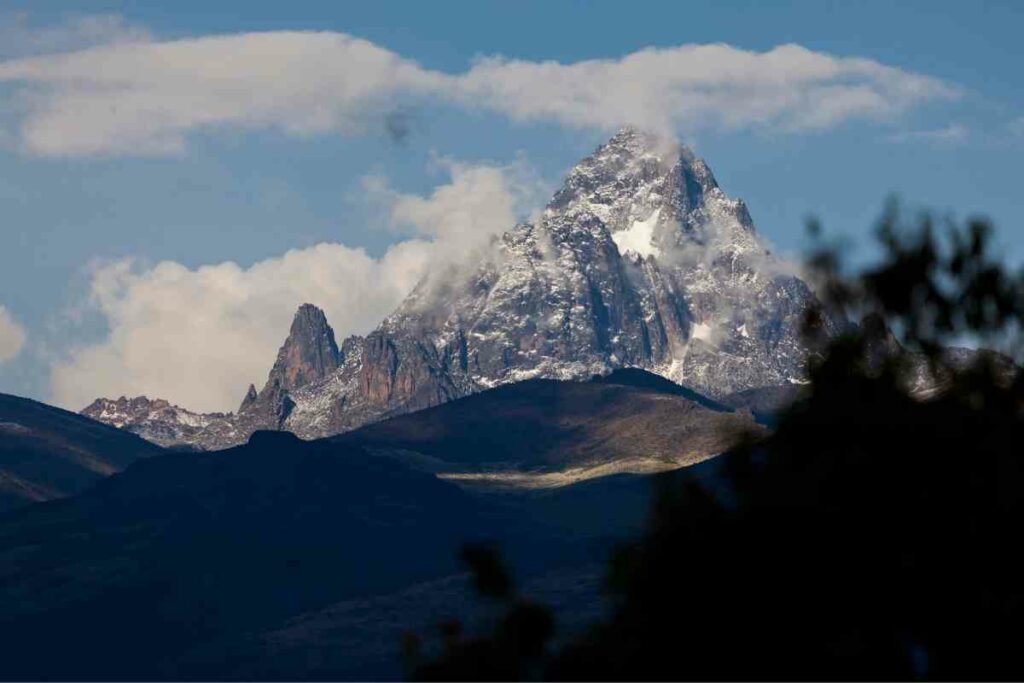
Charter transportations cost up to $30, but you avoid the hustle and bustle of the city as well as enjoy personalized guide services.
You can also fly from the Wilson Airport to the Nyeri Airstrip, but flights are not that frequent.
How To Prepare for Climbing Mount Kenya
Mountain climbing is a hugely rewarding experience if you get it right.
There are things you must consciously do beforehand to ensure you prepare adequately for the task that lies ahead.
Let’s look at some of the most critical considerations.
Prepare for the Altitude
Altitude is any climber’s worst nightmare, and it would be best if you take time to get acclimated to the altitude.
If you haven’t prepared your body for the low oxygen levels, altitude sickness is inevitable, characterized by headache, nausea, and shortness of breath.
Luckily there are special breathing masks and pillows you can buy to make altitude difficulties more bearable.
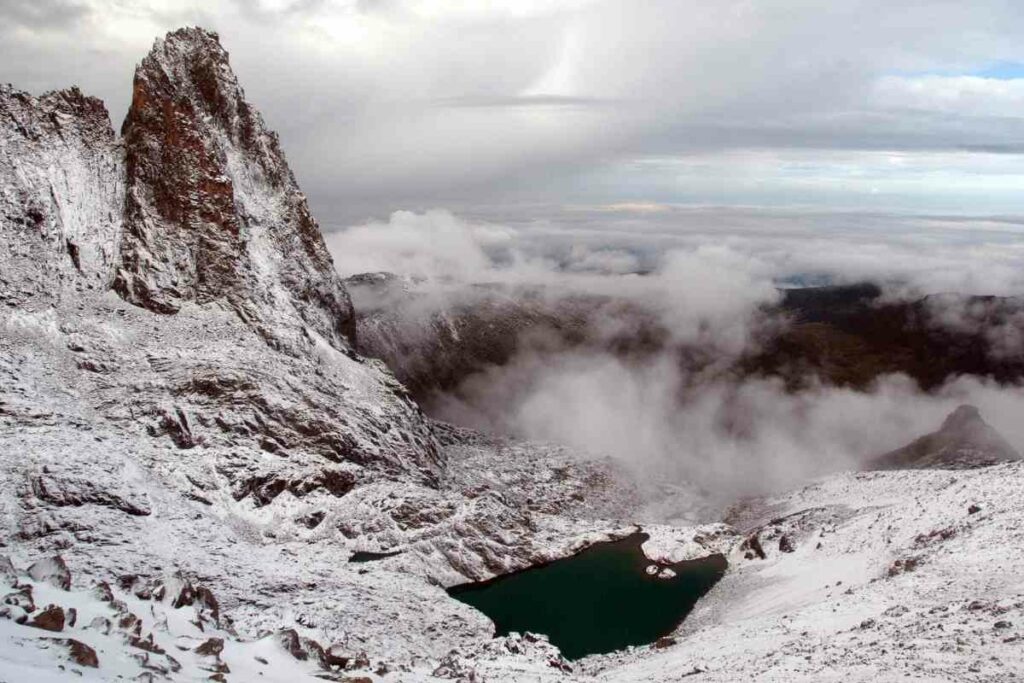
Apart from diminished oxygen levels, you should also be ready to face high winds.
If you have stood on a skyscraper’s rooftop or helipad, you have fought crosswinds trying to blow you off your feet.
Now imagine the strong winds you have to battle at 16,000 feet.
As you climb the mountain, be careful when traversing steep slopes or valleys.
Moreover – This wind can blow away your equipment if they are not properly fastened. If sleeping in a tent, ensure it’s appropriately pegged down.
Prepare for the Physical Exertion
As mentioned earlier, mountain climbing is such an energy-draining endeavor.
Apart from walking up the steep slopes, you have to contend with the pounds of luggage on your back.
Each step feels heavier with each foot gained.
You can do cardio training or climb lower-altitude mountains before attempting Mount Kenya.
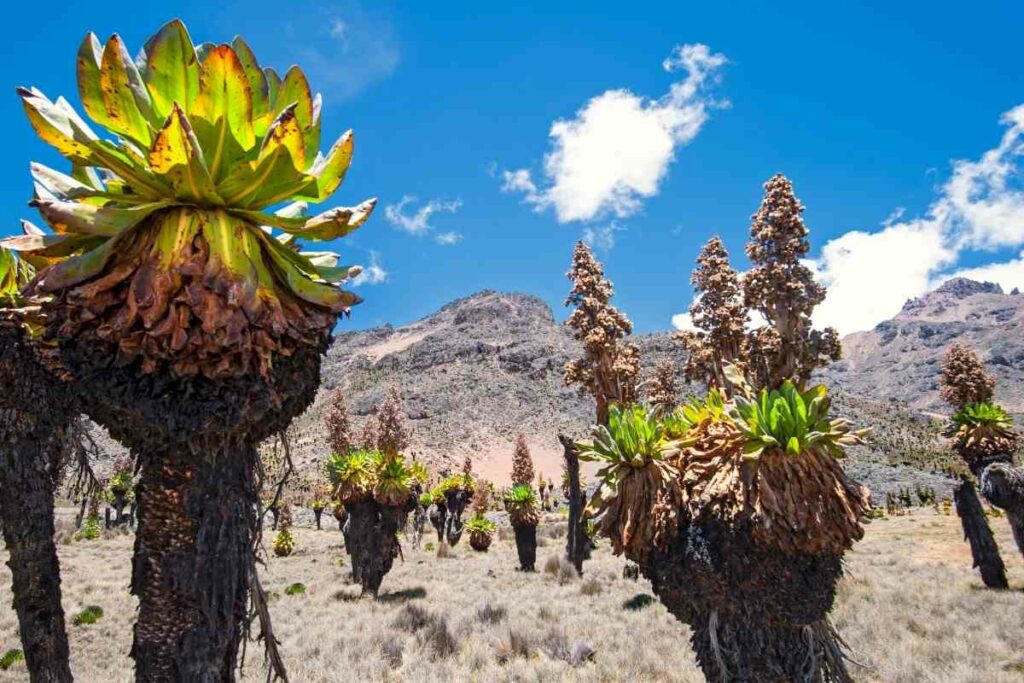
In retrospect, illustrious hikers use Mt. Kenya to prepare them for climbing Mount Kilimanjaro, which is 19,341 feet (5895m.)
Prepare for Extreme Weather Conditions
Like any high-altitude destination, the weather can be pretty unpredictable:
- First off, you have to be prepared for extremely cold conditions. Invest in warm clothing, including heavy-duty climbing boots, to avoid frostbite and pneumonia. It will also help if you have extra clothing sets in case you need to change. However, do not overstuff your bag, so it becomes too heavy; carry what you’ll need. You can have waterproof matches in case you need to start a bonfire to keep warm.
- Secondly, it’s the precipitation. Showers can start any time of the day and can go on for hours, even during the dry season. Have long rain jackets to avoid getting drenched. Besides, use a waterproof bag or have plastic filming over it to protect your equipment, extra clothing, and valuables.
- The third is the light intensity. Cloudy mornings and pitch-black nights will considerably affect your visibility, and a torch comes in handy with a pack of extra batteries.
Have a whistle and a high-frequency communication device in case you get separated from your group for easy tracking.
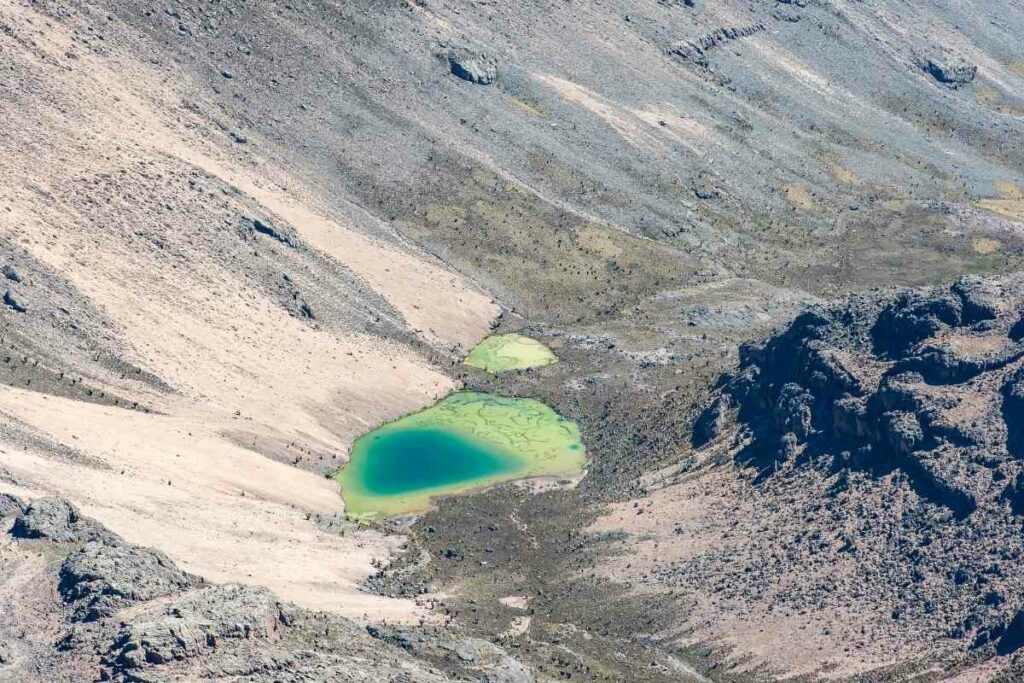
When the skies clear up, it can get too bright that your eyes may begin to hurt.
It would be best to have a pair of heavy-duty sunglasses to protect your eyes.
Carry Sufficient Supplies
While Mount Kenya has numerous camps strewn along the routes, it may be a day or two before you arrive at the next one.
Always carry enough supplies, including toiletries, food for energy replenishment, and water for rehydration.
Water may not be readily available between camps, or what you may find may not be safe for consumption.
It is better to have extra than to be caught short with miles of barren land to go.
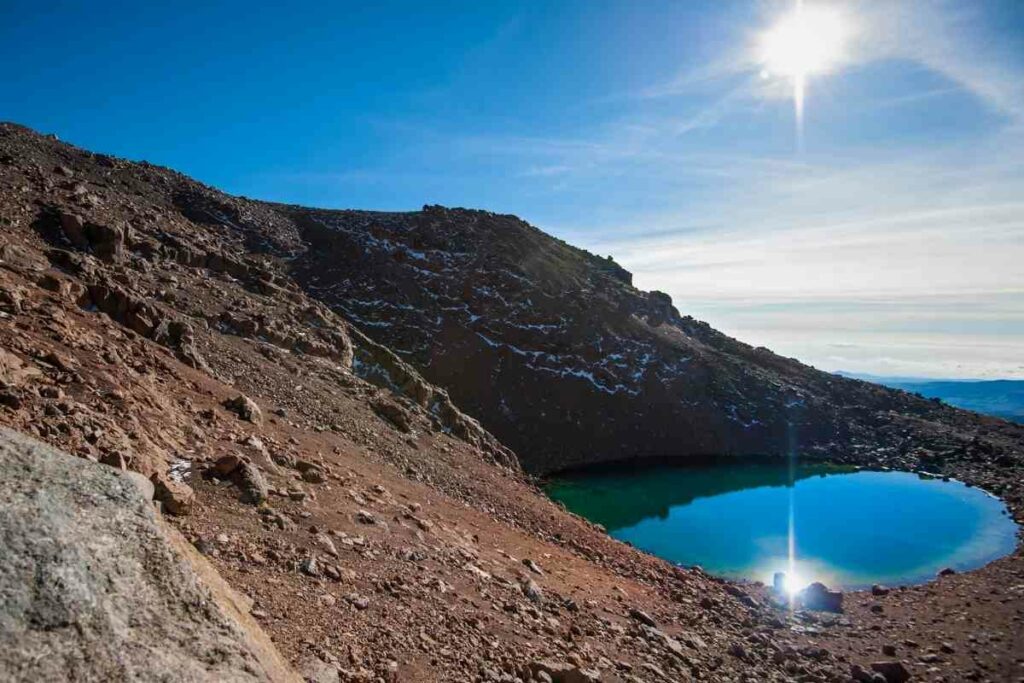
Get Enough Rest
You need to have plenty of rest to avoid burning out along the way, which will have a ripple effect on other members of your climbing group.
Do not be in a hurry to get to the mountain’s peak. Spread the climb over 2 to 3 days, depending on your route.
Enroll an Experienced Guide
Guides are essential to a successful climb, even if you have a map and a compass.
Well-versed with the terrain, they ensure you remain on track as well as point out important aspects such as the prevalent weather, wildlife presence, and trail conditions to expect.
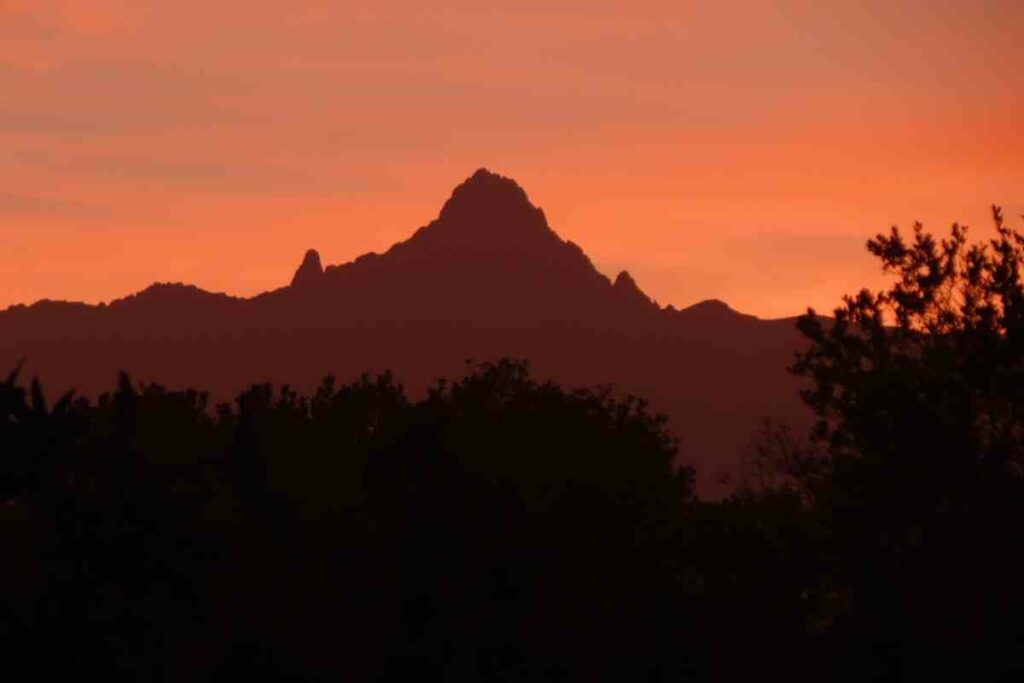
Most guides have also undergone first aid training to handle minor health conditions or accidents that may occur along the trek.
Final Word
We hope the article has covered all you need to know about climbing Mount Kenya.
Physical fitness, mental fortitude, cultural interaction, and beautiful landscapes are just some of the benefits of scaling Kenya’s highest mountain.
Considered tougher to climb than Mount Kilimanjaro, this should definitely be your next stop if you are an outdoor enthusiast.


